Free Shipping on Orders over $75 to the Contiguous US
Free Shipping on Orders over $75 to the Contiguous US
How to Use a Humidity Dome for Seed Starting
October 31, 2024 6 min read 0 Comments

A humidity dome is an excellent tool to have in your seed starting tool kit. Used properly, a dome can; help maintain soil moisture and temperature, increase germination rates, protect delicate or expensive seeds, and limit time spent watering seedlings.
DO YOU NEED A HUMIDITY DOME TO START SEEDS?
Many people debate if a dome is necessary when ordering supplies and planning ahead to start up seeds for this year's garden. Seeds provided with moisture, warmth, and light at the right time will germinate. Humidity domes help maintain two of these three needs for your seedlings.
Humidity domes of all sizes are a helpful tool to use during germination, often used in conjunction with heat mats. They help protect the seeds, maintain moisture levels, and create the perfect environment for those seeds to get a great start. While many of your seeds will likely germinate without the help of a humidity dome, using one will increase your germination rates significantly and decrease the time to sprouting for most seeds.
This practice cuts down on wasted seed and time. Humidity domes are meant to stay on the tray until the first sign of germination or once you begin to see the tray sprout. After this, remove the dome and place your trays under light, with proper air circulation. If brought under light too late, seedlings can get leggy. It is crucial to keep an eye on your emerging seeds during this step. Many will use a heat mat during this process to help speed up germination. Check out How to Use a Heat Mat for Starting Seeds.
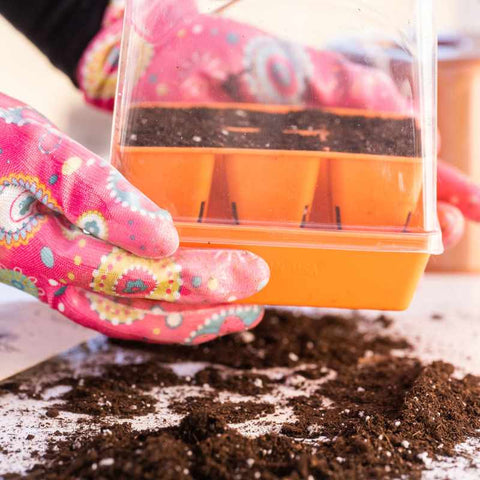
HOW LONG DO YOU KEEP SEEDLINGS UNDER HUMIDITY DOMES?
While the seeds are in the germination process, they require constant moisture. The humidity dome can save you a bunch of time as it helps retain moisture. Having to bottom water or top mist trays less often is huge! Once sprouted, this same humidity can lead to mold issues, so be sure to get them uncovered once the sprouting begins.
Some growers like to wean their seedlings off the humidity domes by propping them up to allow airflow before fully acclimating them into the outside air. Our humidity domes have built-in adjustable vents to allow you to introduce air circulation and decrease humidity slowly for tender varieties. Sprouted seeds need light and air circulation to thrive at this point.
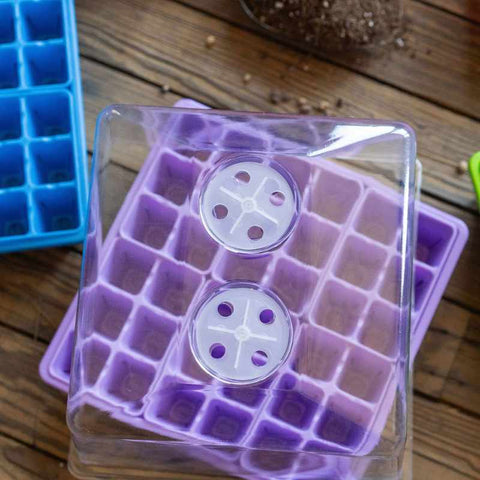
Exceptions to the humidity dome rule
A few crops are the exception to this rule and can benefit from having the dome stay on, with the vents partially open, for days after germination. Peppers notably seem to enjoy a few days of extra humid heat to really get growing.
If you are growing specialty plants for nurseries or landscapers, you may find that using a humidity dome to create a microclimate within your grow space helps you grow strong transplants. Just be sure to harden them off properly to deal with lower humidity than their ideal. Opening the vents completely and then removing them for a few hours a day will help with this process. You can take these modified recommendations from our Seed Starting 101 Guide and apply them to the process of weaning your plants off of added humidity.
5 EASY STEPS TO HARDEN OFF YOUR SEEDLINGS BEFORE TRANSPLANTING.
- Place your tray of seedlings outside in an area protected from wind and direct sunlight for 2-3 hours a day for three days. Keep the dome on with vents open. Remember to bring them back inside at night.
- For the next 3-4 days, place the seedlings outside in the mornings and bring them back in at night. Remove the dome for a few hours each day. Keep out of direct sunlight, though.
- For plants that will be in direct sun, remove the dome and allow plants to experience ambient humidity and direct sunlight for a few hours each day.
- For 1-2 days before planting, leave your trays in their protected space outside overnight with the dome completely off.
- Stop watering your seedlings 18-24 hours before you plan to plant them. (This makes it easier to remove them from the trays.

Using a humidity dome to grow microgreens.
While we recommend stacking most types of microgreens during the germination stage, there are a few that will benefit significantly from the use of a humidity dome. Most of the seeds that need a humidity dome are what we consider the trickier crops, things like amaranth, basil, and carrots, to name a few. For more on the basic growing process of microgreens, you can check out our Step by Step Guide to Growing Microgreens at Home.
Seeds that are extremely small, sticky, or need light to germinate all fall into the category of microgreens that are easier to grow with a humidity dome. Basil microgreens, for example, cannot be stacked because the seeds are mucilaginous. As soon as they are misted with water, they swell up with a clear stick coating resembling frog eggs. Once wet, they are far more likely to stick to the tray above them than to the soil. Using a dome here to keep humidity levels constant and nothing sticking to the seeds is a far more ideal method.
If you are using a humidity dome to sprout microgreens, it is even more important to remove it at the correct time. 24-48 hours after initial germination is ideal. This allows the tiny roots time to find their way into your growing media without being dried out by circulating air. Check out our Microgreens Ultimate Growing Cheatsheet for more information on microgreen germination times.
Using a Blackout Humidity Dome for Specialty Microgreens.
A blackout dome is a humidity dome that has been painted black or manufactured to exclude all light from your growing trays. Crops like popcorn shoots must be grown in complete darkness. Other types of microgreens can benefit from a day or two under blackout to lengthen the stems and make them easier to harvest. Our blackout humidity domes are designed with the specialty microgreen grower in mind. They will cover any of our 1020 growing trays and exclude light as long as the vents stay closed. Even with the vents open, they will exclude enough light to lengthen the stems on your short, hard to harvest crops.
To learn more about this, watch the video and read our When to Use a Blackout Dome post.

HOW DO YOU PREVENT MOLD WHEN STARTING SEEDS USING HUMIDITY DOMES?
You will typically see mold issues if you leave the humidity dome on for longer than the recommended time (germination phase). When germination on a tray is incomplete or staggered, using domes with an adjustable vent helps combat this issue. If a lot of the seeds in your cell plug tray have germinated but not all, you can open the vents on the top of the dome to create a bit of airflow while still keeping the humidity on the tray above the ambient humidity of the room. If any small spots of mold occur during the germination process, they will often disappear once the tray has been exposed to proper airflow and light.
It is also very important to clean your humidity domes between uses and only plant seedlings together with similar germination times, ideally the same number of days as to prevent molding on the first emerging sprouts. Cleaning trays can be done with basic dish soap, a good rinse, and a quick spritz of 3% hydrogen peroxide solution. Check out How to Wash and Care for Seedling Trays.
OTHER BENEFITS TO USING HUMIDITY DOMES
Humidity domes provide protection for your seeds during the germination process. Have you ever had mice or bugs destroy a newly planted flat? Humidity domes cover the edges of the tray to help prevent pests from wreaking havoc on your new seedlings. Although the seal is not airtight, it will prevent most plant pests from being able to access the moist soil as long as the vents are kept closed.
Transporting microgreens and plant starts.
Another huge benefit to using humidity domes is for the transport of fresh microgreens and small plants. In a time of contact-free sales, customers welcome live trays of microgreens delivered with a cover and the reassurance that it has been protected during transport. Humidity domes can help ensure better germination, proper protection, and contact-free transport from seed to sale.

So, do you really need a humidity dome?
Like any farming tool, you could do alright without one, but having one sure makes some tasks easier. For delicate crops, heat-loving crops, tricky to grow microgreens, and tropical plants, the use of a humidity dome can undoubtedly be the difference between success and failure.
Not sure if it will help? Try running a few side-by-side tests in your growing space. Two trays, treat them the same, but cover one with a dome and leave one exposed to ambient humidity. Once you see how the speed and reliability of germination increase, you will likely want to add more of this handy tool to your farming toolkit.
Featured Products
Also in How to Grow Seedlings
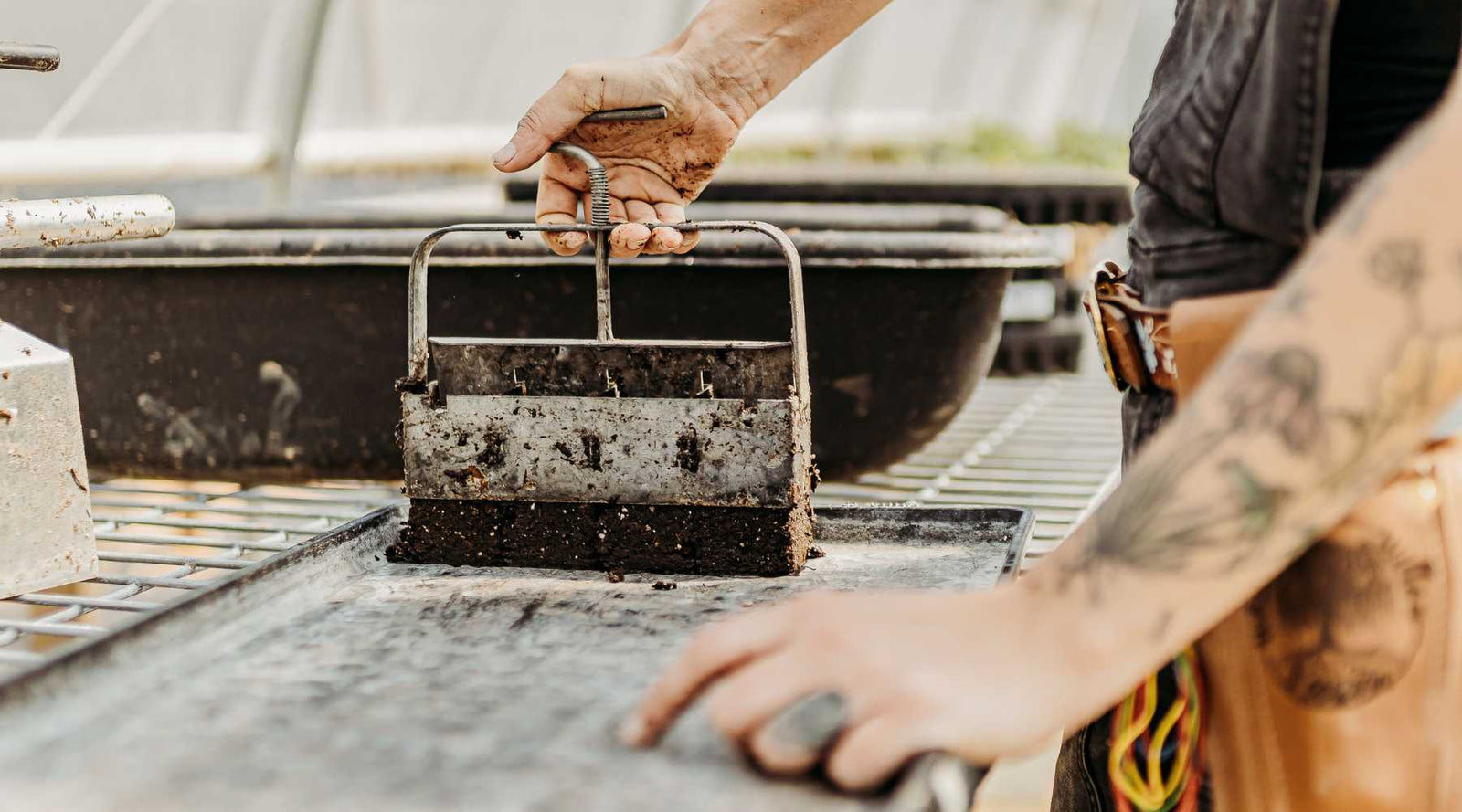
Soil Blocking 101
April 03, 2024 8 min read 0 Comments
Soil blocking is a method of propagating seedlings that involves filling a metal blocking tool with soil and squeezing to form a compressed cube. Seeds are planted directly into the formed block. Soil blocks come in various sizes and are advantageous for air pruning roots.
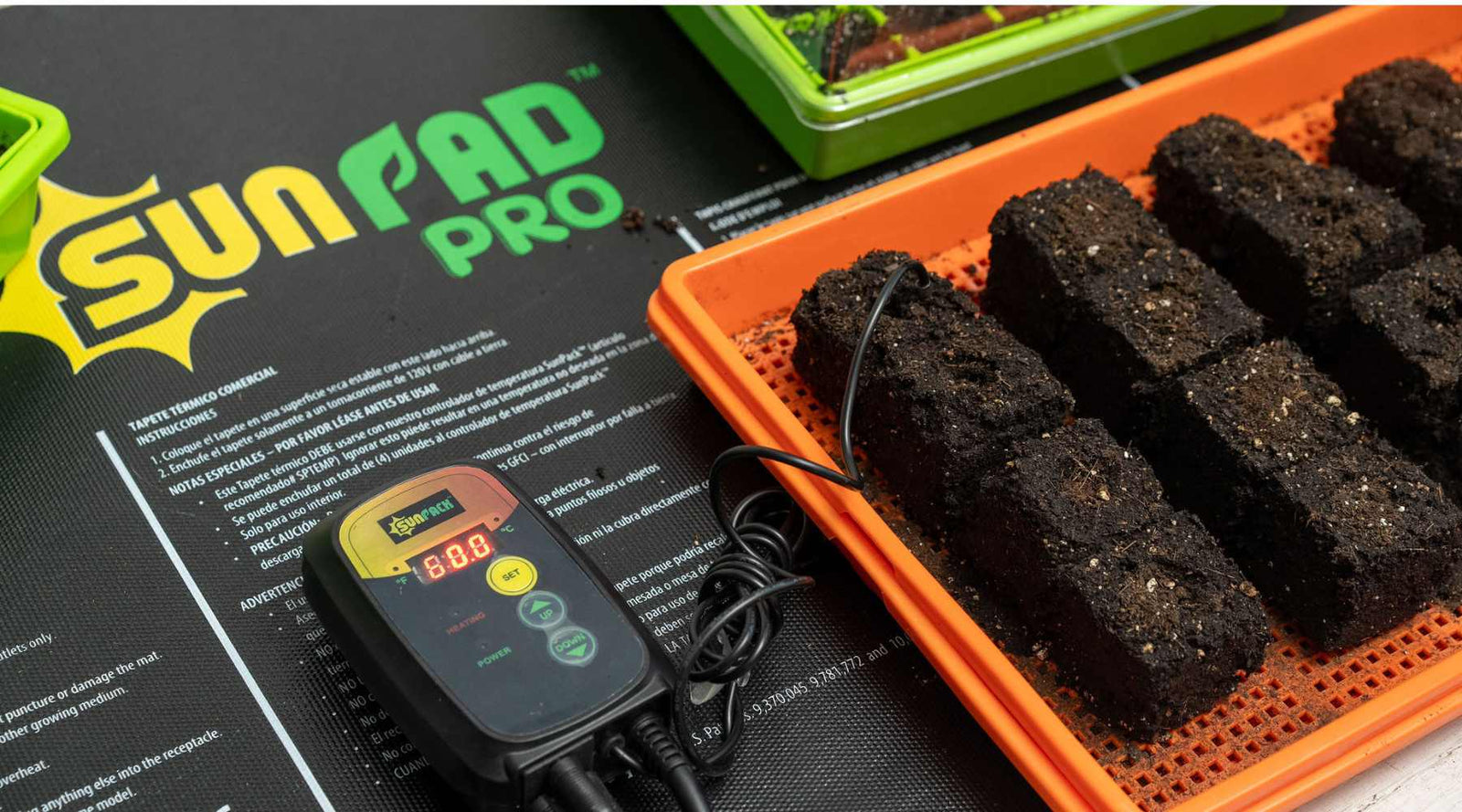
How to Use Heat Mats for Starting Seeds
March 07, 2025 11 min read 0 Comments
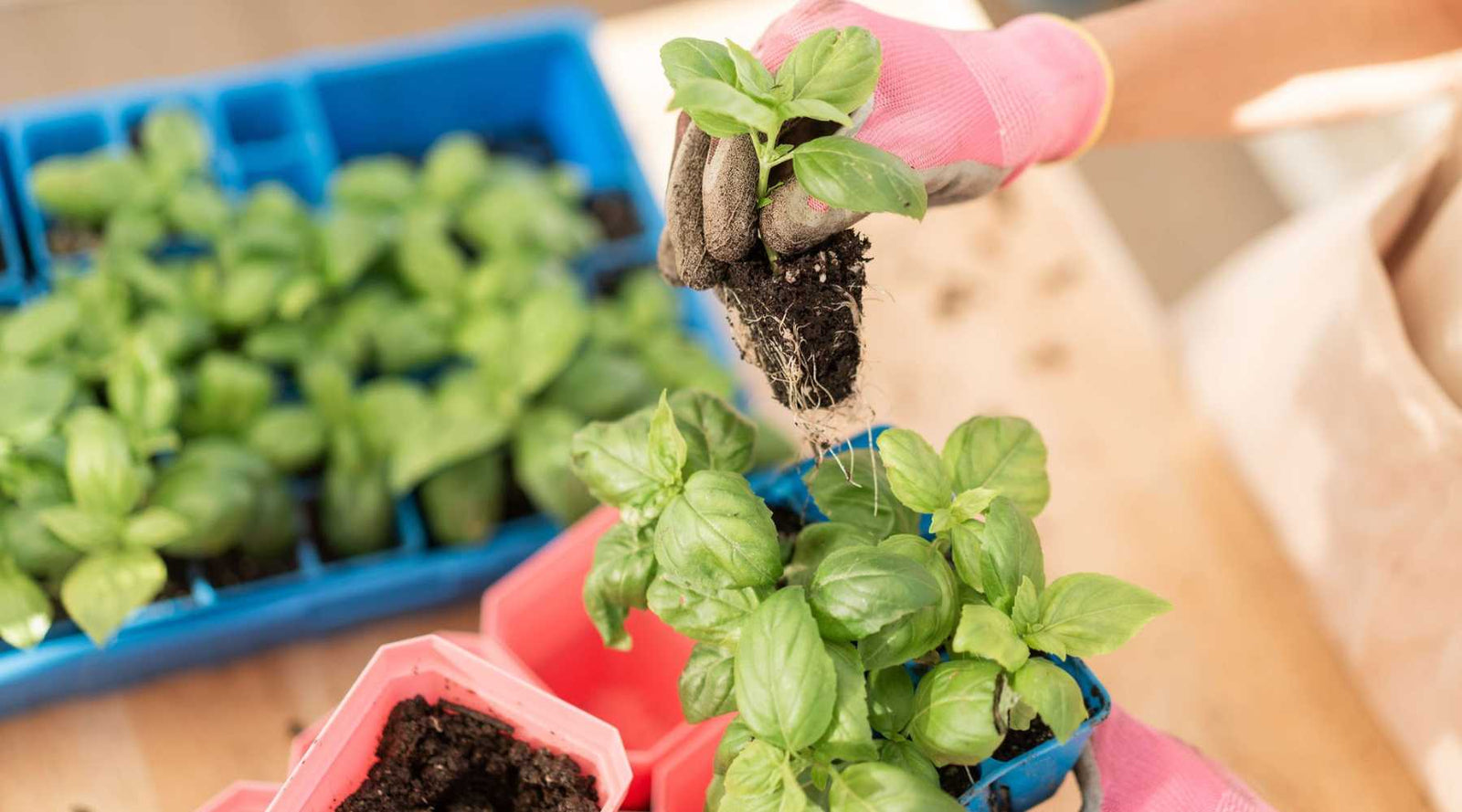
How to Transplant and Up Pot Seedlings
April 13, 2025 15 min read 0 Comments
At What Stage Do You Up Pot or Transplant Seedlings? Learn from the experts at Bootstrap Farmer all of the top tips for successfully transplanting seedlings into bigger pots or outdoors.
Recent Articles
- Soil Blocking 101
- How to Use a Humidity Dome for Seed Starting
- How to Use Heat Mats for Starting Seeds
- How to Transplant and Up Pot Seedlings
- Selecting the Right Seed Starting Cell Trays
- How to Wash and Care for Seedling Trays
- Seed Starting 101
- Hydroponic Growing Mediums: How to Plant into Rockwool Cubes
- How to Bottom Water Your Plants (Without Overdoing It) Step-by-Step
- Left with Extra Seed Starts? Try this.
Subscribe
Sign up to get the latest on sales, new releases and more …
